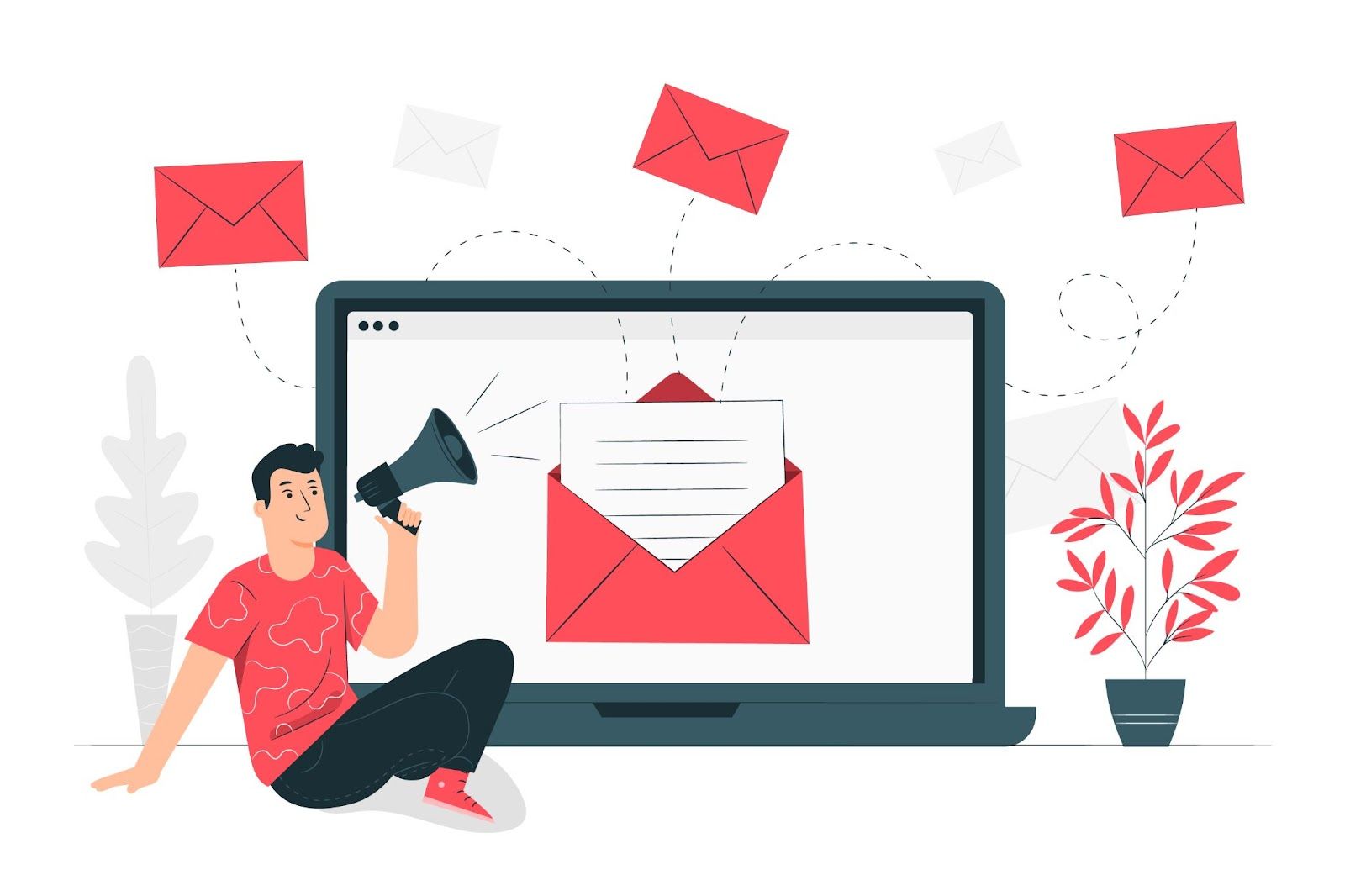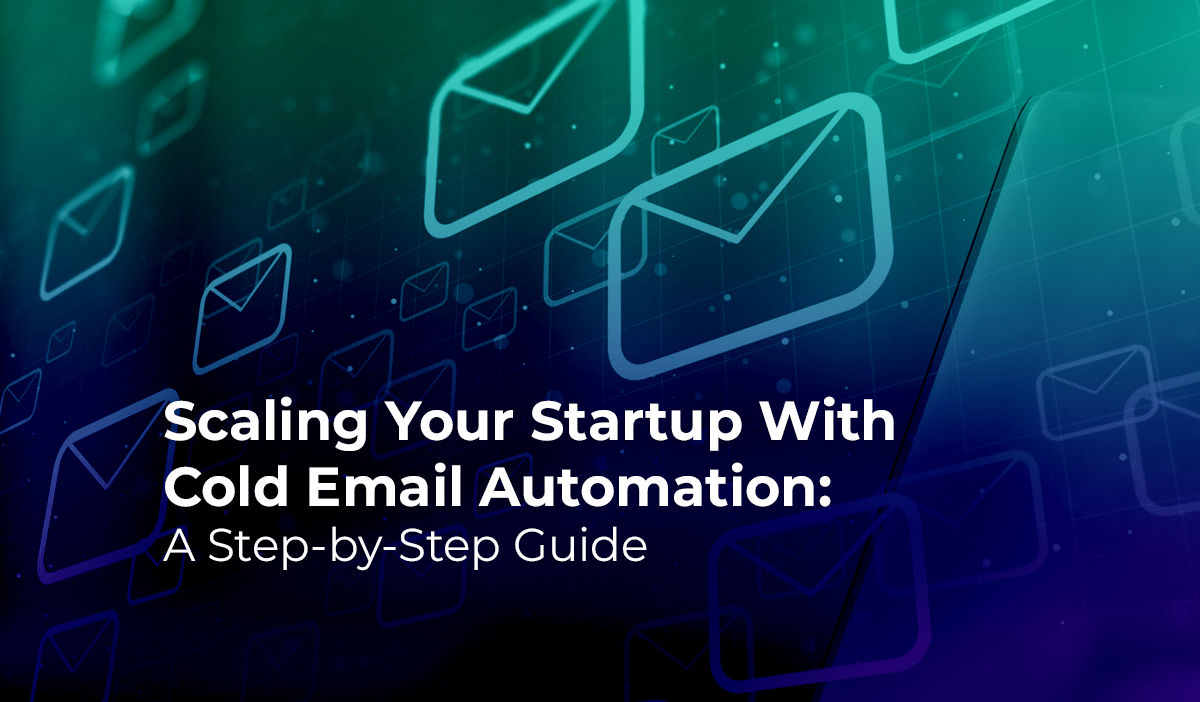As a startup owner, you might find scaling your business to be a heavy battle. With numerous sales channels available, it can be challenging for startups to identify the most effective and efficient way to reach their target audience.
This struggle is because of limited resources and time problems that startups often face. As a result, many startups need help to generate sales and growth.
But did you know that 43% of salespeople consider email as the most effective sales channel? It's true! According to Hubspot, email has proven to be a tried and true method for reaching out to potential customers and driving sales.
Implementing cold email automation can help startups streamline their sales processes, maximize outreach, and optimize their chances of success. Cold email automation can also provide startups with the opportunity to reach a larger audience and generate consistent sales leads.
This step-by-step guide will help you understand how to scale your startup using cold email automation.
So whether you're a sales professional or just starting your business, this guide will provide invaluable insights and practical tips to optimize your email outreach efforts. Let's dive in! 💼🎯
The Power of Cold Email Automation
What is Cold Emailing?
Cold emailing is like knocking on a stranger's door to say hello. It's about sending an email to someone who does not know you or your business. The goal of this email is often to get them interested in your product or services.
A well-done cold email can make the person want to learn more and maybe even become a customer! Cold emailing helps businesses reach out to people, build good ties, and bring in new leads all at once.
These emails need a lot of thought because they should talk about the other person, not just what you sell. Also, each message must suit the person getting it after doing proper homework on them.
In short, cold emailing works as a useful tool for growth when done right.
Choosing the Right Cold Email Automation Software for Your Team

When selecting the ideal cold email automation software for your team, it's crucial to consider must-have features, integrations with CRMs, segmentation capabilities, email personalization options, campaign automation tools, and price considerations.
Integrations with CRMs
Choosing the right cold email automation software for your team is crucial, especially when it comes to integrating with CRMs. Integrations with CRMs allow you to seamlessly transfer data between your cold email automation software and your CRM platform.
This ensures that all the relevant information about your leads and prospects is synchronized and up-to-date in both systems. By having this integration in place, you can streamline your sales and marketing efforts, easily track the progress of your email campaigns, and have a centralized view of all customer interactions.
So when selecting a cold email automation tool, make sure it has robust integration capabilities with popular CRM platforms to maximize efficiency and effectiveness in scaling your startup.
Segmentation Email List
Segmenting your email list is an important step in cold email automation. It involves dividing your recipients into smaller groups based on specific criteria, allowing you to send more personalized and relevant emails.
This can result in higher open and engagement rates, increasing your chances of conversions. To segment your list effectively, you can use email finders or extract emails from LinkedIn.
These methods help you gather the necessary contact information for each target group, ensuring that your cold emails are reaching the right people at the right time.
Email Personalization capabilities
Email personalization is a crucial feature to consider when choosing cold email automation software for your startup team. By personalizing your emails, you can increase the chances of getting them opened, replied to, and ultimately converting leads into customers.
In fact, Personalized Subject Lines Increase Average Email Open Rates by 50%. This means that with the right tools in place, you can tailor your messages to each recipient based on their specific needs and preferences.
This level of customization builds trust and engagement with your prospects, increasing the likelihood of building meaningful connections and driving business growth. So when selecting an email automation solution for your startup, be sure to prioritize its capabilities for effective email personalization.
Remember, personalization is key to unlocking the true potential of cold email automation.
Automation of campaigns
Automation of campaigns is a key benefit of cold email automation for startups. With the right software, you can set up and streamline your entire outreach process in just a few steps.
This includes creating a solid campaign strategy, personalizing your emails, setting up sequences and follow-ups, and integrating the automation software with your email provider. Automation not only saves time but also allows you to scale your efforts by reaching out to a larger audience.
By testing and optimizing your campaigns, you can improve their effectiveness over time. Tracking and analyzing key metrics will provide valuable insights that help you iterate and make data-driven improvements to future campaigns.
Price considerations
Price considerations are an important factor when choosing a cold email automation software for your team.
While cold email automation is a cost-effective method for outreach, it's important to remember that there may be additional costs associated with certain features or services. By understanding the price structure and evaluating the value provided by different software solutions, you can find one that meets your team's needs within your budget.
Automating the Cold Email Outreach Process
Setting Up Your Cold Email Automation Campaign
You can set up your cold email automation campaign in just seven simple steps. Here's how:
- Identify and communicate with potential prospects through effective prospecting.
- Create a solid campaign strategy to guide your outreach efforts.
- Personalize your email outreach to make it more engaging and relevant.
- Set up email sequences and follow-ups to nurture leads and increase response rates.
- Integrate the automation software with your email provider for seamless campaign management.
- Test and optimize your campaign
- Track key metrics, evaluate the success of your campaign, and make data-driven improvements.
Creating a solid campaign strategy
To create a solid campaign strategy for scaling your startup using cold email automation, there are important steps you should follow.
- First and foremost, define your Ideal Customer Profile (ICP). This means knowing exactly who your target audience is and what their pain points are. Having this clarity will help you craft personalized and compelling cold emails that resonate with your recipients.
- Next, gather relevant data about your prospects. This includes information like their job title, industry, company size, and any other details that can help you tailor your messages to their specific needs.
- With the right data in hand, you'll be able to effectively segment your email list and send targeted campaigns to different groups of potential customers.
- When it comes to crafting each email within your campaign, start with a strong opening that grabs attention. Introduce yourself briefly and clearly state the purpose of the email.
- Show empathy by addressing the recipient's pain points or challenges before presenting how your product or service can solve those problems.
- Lastly, make sure to measure and analyze key metrics throughout the campaign. Track open rates, response rates, conversions, and other relevant indicators of success. Use this data-driven feedback to continually iterate on and improve your cold email campaign strategy.
Personalizing your email outreach
Personalizing your email outreach is crucial for successful cold email campaigns. It involves tailoring your messages to suit the specific needs and interests of each recipient. By personalizing, you show that you have taken the time to research and understand your prospects.
One effective method is to segment your email list based on factors like industry, job title, or past interactions.
When crafting personalized cold emails, it's important to make them feel like unique and compelling correspondence.
Remember, personalization in cold email outreach helps you connect with prospects on a deeper level and increases the chances of starting meaningful conversations.
Implementing a successful personalization strategy can be challenging but it's worth the effort. Take the time to research each recipient before reaching out, use their name in the subject line or opening greeting, reference specific details about their company or recent achievements, and include personalized call-to-action buttons.
Keep testing different approaches and measuring results so that you can continually refine your personalization strategy for optimal engagement and response rates.
Setting up email sequences and follow-ups
Setting up email sequences and follow-ups is essential for a successful cold email automation campaign. It helps you engage with your prospects over time and increase the chances of getting a response.
- Plan your email sequence: Determine the number of emails you want to send and their timing. Consider spacing them out to avoid overwhelming your recipients.
- Craft compelling subject lines: Grab the attention of your prospects with subject lines that are personalized, intriguing, and relevant to their needs or pain points.
- Personalize your emails: Tailor each email to the recipient by including their name, company, or any other relevant information you have gathered during your research.
- Provide value in each email: Ensure that each email delivers valuable content or insights to your prospects. This could be in the form of industry tips, case studies, or success stories.
- Include a clear call-to-action (CTA): Clearly state what action you want the recipient to take, whether it's scheduling a call, downloading an e-book, or signing up for a demo.
- Set up automated follow-ups: If you don't receive a response after sending the initial email, schedule follow-ups at specific intervals. This will help keep your message top-of-mind without being too pushy.
- Monitor and analyze responses: Keep track of who opens your emails and who responds to them. This data will help you refine your approach and improve engagement rates over time.
Integrating automation software with your email provider
Integrating automation software with your email provider is an important step in automating your cold email campaigns. This integration allows you to streamline the outreach process and effectively manage your email communication.
By integrating automation software, such as Woodpecker, with your email provider, you can improve deliverability rates, enhance copywriting, and utilize templates, strategies, and techniques to generate leads and achieve high conversion rates.
This integration also enables you to track key metrics and analyze the success of your campaigns, allowing you to make data-driven decisions for improvement. Overall, integrating automation software with your email provider is crucial for ensuring the effectiveness and efficiency of your cold email automation efforts.
Ensuring Deliverability and Avoiding Spam Filters
To ensure that your cold email campaigns are successful and avoid being marked as spam, follow these best practices:
- Avoiding spam filters is crucial for maximizing the success of email campaigns.
- Regularly update and clean contact lists to remove non-engaging or blocked email addresses.
- Monitor email marketing metrics to identify and remove problematic email addresses or improve engagement.
- Use Verifying email accounts with SPF and DKIM records to ensure deliverability and avoid spam filters.
Analyzing and Measuring Cold Email Automation Results

To effectively analyze and measure the results of your cold email automation efforts, follow these steps:
- Track and analyze key metrics: Keep a close eye on important metrics such as open rates, click-through rates, response rates, and conversion rates. These numbers will give you valuable insights into the effectiveness of your email campaigns.
- Evaluate the success of your campaign: Assess whether your campaign is meeting its goals and objectives. Are you generating enough leads? Are you converting those leads into customers? Take a deep dive into the data to understand how well your cold emails are performing.
- Iterate and improve based on data-driven insights: Use the data collected from your analysis to make informed decisions about how to optimize your future campaigns. Identify areas where you can make improvements, whether it's tweaking your subject lines, personalizing your messages further, or refining your targeting strategies.
- Use A/B testing: Experiment with different variables in your email campaigns to see what resonates best with your audience. Test different subject lines, email content, call-to-action buttons, or sending times to determine which elements yield the highest response rates.
- Monitor customer engagement: Pay attention to how recipients are engaging with your emails beyond just opening them. Are they clicking on links? Are they replying? Take note of these interactions as they provide valuable indicators of interest and potential opportunities for conversion.
- Utilize CRM integration: Integrate your cold email automation software with a CRM system to consolidate all customer data in one place. This integration can help you track the entire sales cycle from initial outreach to eventual deal closure, enabling more accurate measurement of ROI and overall campaign success.
Iterating and improving based on data-driven insights
By analyzing the data from your cold email automation campaigns, you can gather valuable insights that will help you refine and improve your strategies. Tracking important metrics such as email open rates, response rates, and conversion rates will give you a clear picture of how successful your campaign is.
With this information, you can make data-driven decisions to iterate and optimize your approach.
For example, if you notice that certain subject lines or email templates are performing better than others, you can use this insight to refine your messaging and increase engagement.
You can also identify any problems in the sales process and make necessary adjustments to improve conversions.
It's important to continuously monitor and analyze the performance of your cold email campaigns so that you can make informed decisions about where to invest your time and resources.
By iterating based on data-driven insights, you have the opportunity to continually improve your results and achieve greater success in reaching potential customers.
Conclusion
In conclusion, cold email automation can be a powerful tool for scaling your startup. It offers benefits such as increased efficiency, personalization, scalability, cost-effectiveness, and improved lead generation.
By choosing the right software and following best practices, you can automate your cold email outreach process and achieve success in reaching prospects. Implementing a data-driven approach and continuously optimizing your campaigns based on insights will help you maximize results.
Start leveraging cold email automation today to take your startup to new heights!







